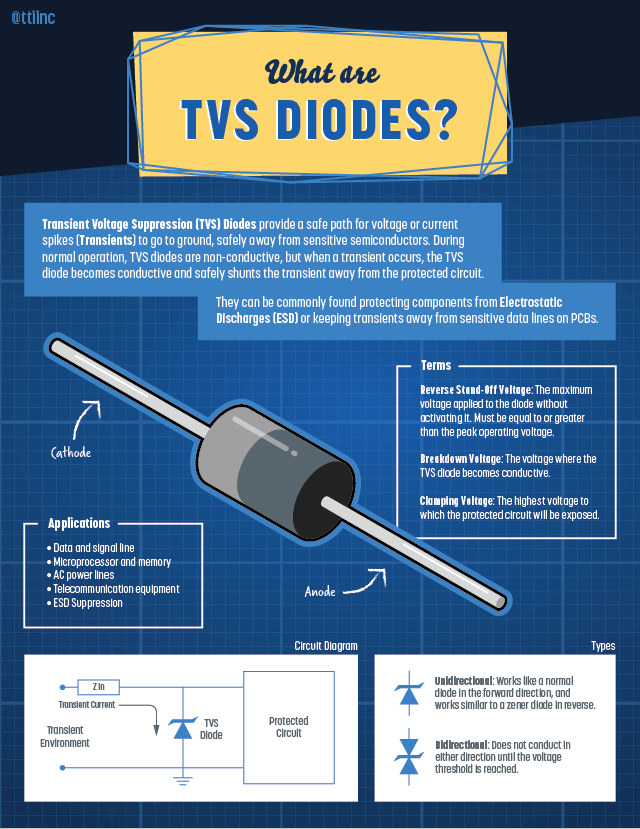Diagram Of TVS Diodes
What are TVS Diodes?
Transient Voltage Suppression (TVS) Diodes provide a safe path for voltage or current spikes (Transients) to go to the ground, safely away from sensitive semiconductors. During normal operation, TVS diodes are non-conductive, but when a transient occurs, the TVS diode becomes conductive and safely shunts the transient away from the protected circuit.
They can be commonly found protecting components from Electrostatic Discharges (ESD) or keeping transients away from sensitive data lines on PCBs.
What is TVS Diodes used for?
TVS Diodes have a variety of applications, including data and signal lines, microprocessors and memory, AC power lines, telecommunication equipment, and ESD suppression. TVS Diodes that are used for ESD suppression is a specialized type called ESD Suppressors.
Key terms for when discussing TVS Diodes:
Reverse Stand-Off Voltage is the maximum voltage applied to the diode without activating it, and it must be equal to or greater than the peak operating voltage. Breakdown Voltage is the voltage where the TVS diode becomes conductive. Clamping Voltage is the highest voltage to which the protected circuit will be exposed.
What are the two different types of TVS Diodes?
The Unidirectional type works like a normal diode in the forward direction and works similar to a Zener diode in reverse. The Bidirectional type does not conduct in either direction until the voltage threshold is reached.
Looking for TVS Diodes? Search TTI's Inventory
